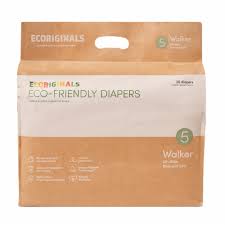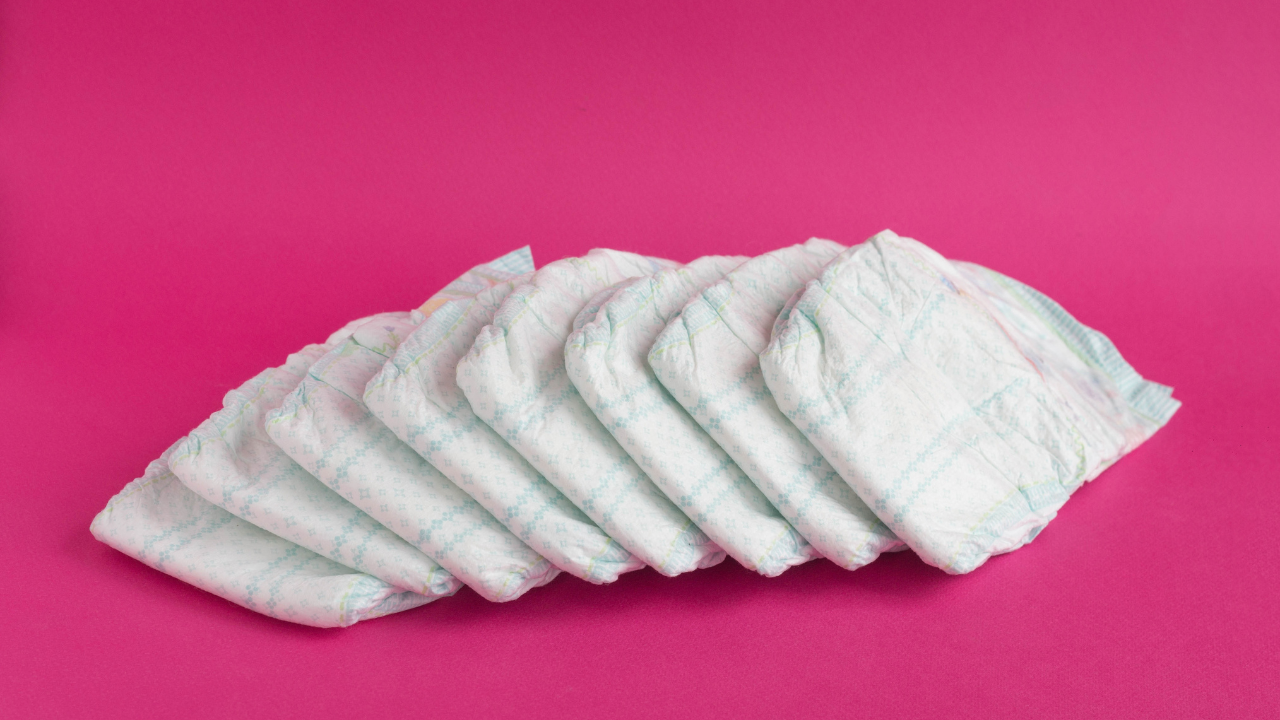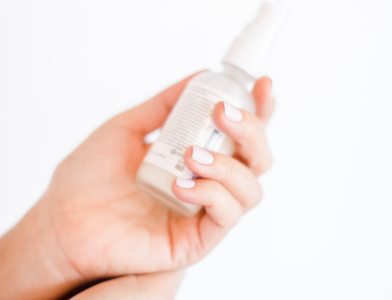As a toxicologist, I understand the importance of protecting our little ones from environmental toxins. In this video, we will review the top 10 most popular disposable diaper brands and explore their safety, transparency, and sustainability. It’s crucial to be aware of potential harmful chemicals present in mainstream diapers and choose non-toxic options. Please note that this review focuses on the materials used and the brand’s practices, rather than diaper performance or cost. Let’s dive in and discover the world of non-toxic diapers!
In my latest YouTube video, I show the reasons why you might want to choose non-toxic disposable diapers for your baby, the problems facing consumers, and in-depth reviews of each brand. Finally, you’ll find my top pick for non-toxic disposable diapers.
Here’s what you’ll learn:
- Understanding Non-Toxic Diapers
- Navigating Greenwashing
- Why Choose Non-Toxic Diapers
- What to Look for in Non-Toxic Diapers
- Diaper Brand Review: Bad, Better, Best
If you want to watch the full video, press play now! You can also continue scrolling to read more.
Please note this blog post contains affiliate links that allow you to find the items mentioned in this video and support the channel at no cost to you. While this account may earn minimal sums when the viewer uses the links, the viewer is in NO WAY obligated to use these links. Thanks for your support!
Understanding Non-Toxic Diapers
Non-toxic diapers are designed to be safer, gentler, and healthier for your baby compared to conventional diapers. Conventional diapers often contain synthetic petrochemical-derived materials, such as polypropylene, polyethylene, and super absorbent polymers. Research has shown that disposable diapers may contain toxic chemicals like formaldehyde, endocrine-disrupting phthalates, and heavy metals, which can potentially harm babies. Some of these chemicals are contaminants of the manufacturing process, while others are intentionally added, such as lotions, fragrances, dyes, and wetness indicator chemicals.
Navigating Greenwashing
Finding safer diaper brands can be challenging due to the prevalence of greenwashing, where companies use marketing tactics to create an impression of safety or sustainability without substantiating their claims. Buzzwords like “pure,” “natural,” or green colors in logos and images of plants can mislead consumers. Despite manufacturers being responsible for product safety, toxic chemicals can still be found in diapers. This calls for consumers to take the initiative in researching and holding brands accountable for producing safe products.
Why Choose Non-Toxic Diapers
Using non-toxic diapers is important because a baby’s diaper area can absorb more chemicals than other areas of their body. The combination of moisture, friction, and prolonged exposure makes this area prone to chemical absorption. When chemicals are absorbed in the diaper area, they can bypass liver detoxification processes and potentially pose long-term risks, considering a baby’s developing body. Minimizing these chemical exposures helps reduce your baby’s toxic burden and promotes a healthier environment.
What to Look for in Non-Toxic Diapers
The consumer product landscape can be challenging to navigate due to unsubstantiated claims and greenwashing. The best non-toxic diaper brands are transparent, able to back up their claims, and prioritize the use of plant-derived materials over petroleum derivatives. While it is inevitable for disposable diapers to contain synthetic materials, some brands incorporate more biodegradable plant materials, which we will explore further. When evaluating brands, it’s essential to consider their overall business practices, rather than focusing solely on individual components of the diaper.
Reviewing the Brands
In this review, we will assess the top 10 diaper brands based on three criteria: ingredients, diaper features, and brand marketing. Each brand’s transparency, safety, starting materials, and processing will be evaluated. We’ll discuss the pros and cons for each brand based on the information obtained from their websites and direct communication. It is important to conduct your own research and determine what works best for your family.
👎🏼”Bad” Disposable Diaper Brands
These are the brands that require the most improvement and ones I would avoid unless in a pinch with no other options.
- Hello Bello
- Pampers Pure Protection
- Millie Moon
- Honest Brand
These brands fell short in various aspects, such as their use of petroleum-derived materials, lack of transparency, undisclosed chemicals, and insufficient responsiveness to inquiries. These brands still have much room for improvement in providing safer options for consumers and avoiding unsubstantiated claims.
👌🏼”Better” Disposable Diaper Brands
In the middle category of diaper brands, there are a few that perform better than others but still have room for improvement. Let’s take a closer look at each brand.
- Coterie: Coterie is a brand that claims to use TCF (Totally Chlorine Free) pulp instead of ECF (Elemental Chlorine Free). They have tested their diapers for contaminants, and the results indicate low levels within safety limits. However, they do use petroleum-derived materials in their diapers, and there is little information about the plant composition except for the fluff. The wetness indicator they use is unspecified, which raises concerns about transparency and safety. They have a dedicated safety report page, but it lacks an actual report, making it difficult to evaluate the testing comprehensively. Obtaining the test reports was extremely challenging, despite their emphasis on safety, which creates issues for consumers wishing to view this information prior to purchasing.
- Kudos: Kudos stands out because they use a cotton top sheet in their diapers, which is rare among brands. They have an extremely transparent website that outlines each layer of their diaper and its materials. However, their responsiveness to inquiries is lacking, and they haven’t provided clear answers regarding the plant-derived composition, chemical used in the wetness indicator, and glyphosate residues in their cotton top sheet. The use of azo dyes for unnecessary diaper prints is another concern.
- Dyper Brand: Dyper Brand utilizes a bamboo top sheet and TCF pulp, with 55% of their materials being plant-derived or biodegradable. They have obtained OEKO-TEX certification, which is a positive aspect. However, they do use a wetness indicator, and the production of bamboo textiles can result in the formation of toxic waste. Despite this, they offer a good option for those in immediate need, and their availability in Walmart stores makes them accessible.
- Bambo Nature: Bamboo Nature claims to use TCF pulp and has obtained OEKO-TEX certification. They stand out for their transparency and responsiveness, as they shared their full test reports and chemical analysis with ease. However, they do use petroleum-derived plastic materials, which is a drawback for sustainability.
- Healthy Baby: Healthy Baby also claims to use TCF pulp and incorporates plant-derived materials in most layers of their diapers. They are EWG verified, but relying solely on verifications is not sufficient for a thorough safety assessment. Inconsistencies between website information and email responses raise concerns about transparency. Additionally, they use a small amount of azo dyes for their logo, which is unnecessary.
🏆”Best” Disposable Diaper Brand
Ecoriginals emerges once again as the top pick. They do not use wetness indicator chemicals or dyes, and up to 90% of their materials are plant-based, making them highly sustainable and biodegradable.

Ecoriginals has demonstrated complete transparency, responsiveness, and provided full test reports for their diapers immediately upon request. They have also avoided making unsubstantiated claims, making them a reliable choice. The only improvement suggested for Ecoriginals is switching to an organic GOTS-certified cotton top sheet.
Conclusions
While no diaper brand is perfect, it’s important to conduct personal research and choose what suits your child best. The key is to find what works for your family 👨👩👧👦
Reusable diapers made of organic natural fibers like cotton, hemp, or wool for the inner layer are the best way to avoid toxicants in disposable diapers. Synthetic materials, such as polyester, should be avoided for reusable diapers, especially for an undergarment, as they may contain endocrine disruptors. For outer covers, organic wool diaper covers with lanolinization can provide waterproofing, although lanolin may need to be reapplied over time.
Remember, the long-term impact of chemical exposures is more significant than individual or short-term exposures. Choose the best option within your budget and do the best you can for your child’s well-being.



